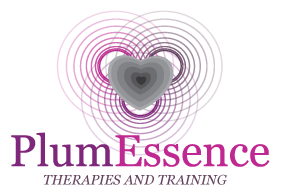This is the 21st in a series of blogs, using answers I provided to pass Mental Health qualifications. This blog is the start of describing different types of depression, starting with post-natal depression.
As with many mental health subjects, they can all be massive topics with reams of books written on them. I will aim to break down post-natal depression down into 3 easy to read blogs, describing possible causes, how post-natal depression can affect individuals and the people around them, and how it can be treated and managed.
I strongly believe there is no one-size-fits all approach to managing any kind of mental health condition. It is the main reason why I am not a massive advocate of medication. I prefer to consider natural, healthy ways to recognise and manage any kind of mental ill health, tailoring each treatment and therapy to suit each individual. I do this from experience. It is what helped me which is why I believe it can help others too.
My own thoughts were written before I read the book Eyes Without Sparkle, by Elaine A. Hanzak which describes post-natal depression, from a very personal point of view, far better than I ever could.
Post-natal depression:
In this series of blogs, the aims are to explore and show understanding of how post-natal depression can affect the individual, through symptoms and behaviours, the potential impact on their lives and the implications for people around them.
I aim to give an insight of situations in life, where depression and the feelings that come with it will affect an individual’s ability to cope. The ripple effect is further considered, including a range of feelings, leading to potential isolation and further worsening of someone’s symptoms.
I feel it is important to highlight that family members might avoid the person with mental health concerns, because of lack of understanding, and this will impact negatively on the person’s already low self-esteem.
Prevention of stigma is about raising awareness and being able to start a conversation so that everyone has access to the information they need.
Definition of post-natal depression:
Postnatal depression is a depression suffered by women after they have given birth. It does not affect all women and it is becoming more widely recognised that men can suffer too.
Is there a difference between baby-blues and post-natal depression?
Baby blues start almost immediately after giving birth, or at least within a few days, and tend to last only a few days.
The baby blues could be brought on by the sudden change in hormones and symptoms are sudden bursts of crying, unable to relax and sleep, not being able to eat and feeling anxious about failing as a mother.
If the symptoms of baby blues continue, the mother could be suffering postnatal depression. However, it is considered the symptoms could start anytime within the first year.
Postnatal depression (PND) can start all of a sudden or be a gradual process. Because women tend to consider themselves as being labelled as bad mothers, they tend not to tell anyone how they are feeling for fear of social services being involved.
Symptoms of PND can include:
– Disconnection from everyone and everything.
– feeling out of control
– a feeling of pressure to be ‘normal’
– a lack of feeling of love for the baby
– resentfulness towards the father and others
– feeling isolated
Possible risk factors for developing post-natal depression
If the symptoms of post-natal depression persist for mothers and left untreated, it could be a cause for long-term concerns.
As with most forms of depression and mental ill-health, it is often not the case that one form of pressure or stress can lead to PND. As well as the concerns detailed above, other factors that can lead to PND include:
– relationship concerns with the baby’s father, or the immediate and extended family, perhaps because the mother feels unsupported and mis-understood.
– financial concerns
– juggling previous life of work and children with the extra responsibility of a baby
– previous history of mental ill-health
– history of PND within the immediate family, or the mother before
– previous history, ie a childhood experience, of being in a loveless, or emotionally detached, family.
– a traumatic birth experience.
The features of puerperal psychosis.
Puerperal psychosis or postpartum psychosis is considered to be a severe mental illness, which tends to start within a few weeks of a baby being born. Although it has often thought to not be the case, it can happen even if a woman has given birth previously.
Some women have described postpartum psychosis as “a different reality to everyone else’s, having a bizarre reality, having severe anxious thoughts such as ‘baby will die if I don’t breastfeed’.”
The mother can experience such things as:
– rejection and neglect of the baby
– paranoia of being watched and suspicious of everyone
– hallucinations and hearing voices, which could result in very irrational behaviour and potential harm to the baby
– severe depression and/or the onset of bipolar disorder.
Upon recovery, the woman is often horrified at what she has said and done during the postpartum psychosis period.
The next blog with consider the effect of post-natal depression on the mother and others.
Tracey of PlumEssence Therapies and Training is a qualified stress management consultant, mental health first aider, clinical hypnotherapist and body work therapist focusing on helping reduce and alleviate concerns connected to both physical and emotional wellbeing. Tracey is also a teacher and trainer, delivering workshops and accredited mental health courses.
Tracey is available for a no-obligation chat to see how we could work together on 01889 808388 or tracey@plumessencetherapies.co.uk
